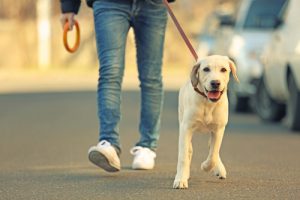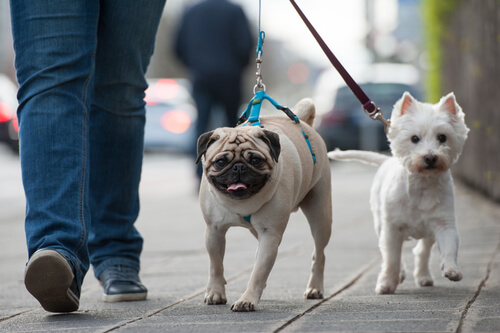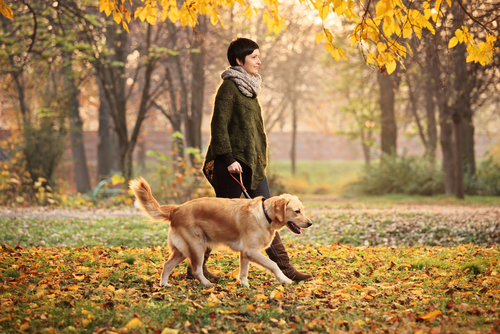Does Your Dog Pull on Walks? Here's the Fix

It isn’t uncommon to see a dog pulling its owner as if it were the dog walking the owner rather than the other way around. Or maybe it’s you who has had this experience. In spite of your efforts, there’s no way you can change this behavior while you’re walking.
Today we are going to give you the definitive solution to this problem. Follow our advice and you’ll see how things will fall into place and you will be the one walking your dog and not the other way around.
The right leash and harness for a good walk

This is an essential requirement if we want our walk with our dog to be pleasant. He should be comfortable wearing the proper equipment. But how do you choose it?
This does not mean that the right equipment is going to break your dog’s bad habit of pulling you on a walk, but it will encourage the animal not to hurt himself nor you while he learns.
The most highly recommended is to choose a harness rather than a collar that only goes around the neck of the animal. The harness goes around the chest and in the case of pulling it is better, as it will not injure the dog. There is a type of anti-pull harness that doesn’t allow you to even feel your dog pulling.
To avoid hurting yourself, choose a padded leash that allows you something soft to hold onto each time the dog pulls you.
Why does your dog pull you on your walk?
Dogs that pull on the leash do it for the following reasons:
- Excitement. Going out for a walk is something that every dog loves and causes a high level of excitement. One way of helping with this is taking the dog out more frequently or if that’s not possible, giving it longer walks so that she will be aware little by little that she will have time to get out her excitement. Said excitement should pass after 10 to 15 minutes outside.
- Stress or anxiety. Pulling the leash on a walk is sometimes nothing more than another demonstration of your dog’s anxiety or stress. If after 15 minutes outside your dog continues pulling on the leash, bring him to the vet, as it likely has nervous tendencies.
- Built up energy. Some dogs find it harder than others to expend all the energy that they have accumulated. In case you believe that this may be the case with your dog, review how much food he consumes and avoid giving him more than necessary. Long walks that give the dog the chance to run around and release adrenaline will be essential.
How a walk with your dog should be
Your dog has two types of needs: physiobiological needs and the need to be taught and educated by you. You must understand that you can’t combine the two or the animal will go crazy.
For this reason, the first few minutes of a walk should be for your pet to do her business, so you shouldn’t try to calm her down, make her walk next to you or follow orders. That would be a mistake.
Once your animal has “unloaded,” then you can start to instruct him not to pull on the leash, to heel and to understand that it’s you taking him on a walk and not vice versa.
Teaching your dog to heel
In order for your dog to heel, do the following:

- Choose a sound or word that the dog can associate with you wanting him to heel.
- Use rewards. Use the chosen word and when your dog obeys, give him a treat. Don’t give it much time before going at it again, some ten or fifteen times. This way the animal will become familiar with the word or sound that you’ve chosen.
- Walk slowly while saying the word several times so that the animal doesn’t walk ahead.
- Use a treat as bait, making the animal follow it while you repeat the chosen word or sound over and over as a command.
- Be patient. Don’t expect that your dog will obey every time or throughout the entire walk. You will need to do it over the next few days.
This text is provided for informational purposes only and does not replace consultation with a professional. If in doubt, consult your specialist.